The content of the article
In today's article, we study the next representative of reptiles, which is ranked as a scaly squad. It will be about a patterned snake, which often becomes a favorite pet among snake lovers. In this article we will study everything related to the variety under discussion, give a description and other characteristics. Let's not drag out, let's get started right away.
Description
- This variety of snakes is classified as non-poisonous, comparable to snakes. In length, individuals grow to 1.5 meters, but, as a rule, meter-long representatives of the family are found. About 25 cm are allotted to the tail. Everything else occupies the body. It is sophisticated and beautiful.
- The head is wide enough, shortened, practically does not separate from the neck. The pupils are round, pigmented in black. The scales on the head are not round, but elongated, which distinguishes this snake from the like. Scales on the forehead very close to the eye sockets.
- Females have in their arsenal on the abdominal part much more scales than males. So, the females have about 215 scales, while the males have only 200. The differences are minimal, but they exist. In the lateral parts, the scales are smooth and thin, on the back they are strong and hardly noticeable.
- A feature is considered that the color of the case of this representative is unpredictable. It may vary depending on the habitat and other aspects. Usually the reptile on the body is pigmented with brown-gray, but shades of brown are sometimes observed. On the body are strips of brown color and dark spots. Some strips extend to the tail.
- The head at the top is decorated with beautiful patterns that change over the course of an individual's life cycle. The temporal section is equipped with a dark stripe, it is stretched right up to the cervical region. The abdominal part is light or faded yellow, but spots of a dark tone can be seen. When individuals molt, their color loses its brightness.
- An interesting fact is that in the sixties of the last century the population of these individuals did not stand out from the others. But then it began to shrink rapidly, as some people take this snake as a poisonous representative of the species. In some regions, reptiles of the patterned type are listed in the Red Book.
- These reptiles can live in various places, regardless of climate. They are found in the steppe stripes, forest zones, mountains. Some individuals live in vineyards. Others love peaks, so they climb to a height of 2 km. from sea level. There are many snakes in Asia Minor, Ukraine, Korea, China, Mongolia, and Transcaucasia.
Nutrition and lifestyle
- The presented individual belongs to daytime reptiles. It is in the daytime that the snake goes hunting. Most often, it feeds on other snakes, birds, fish, insects and amphibians. Moreover, such individuals often prefer to feast on chicks.
- Such a snake can swallow an entire egg without any problems. Then she crushes the shell with the walls of her stomach. In addition, any one type of food may predominate in the diet of such reptiles, it depends on the environment.
- Such animals leave for wintering from mid-autumn to mid-spring. If such snakes live in the southern regions, they can already begin to show activity at the end of February. Feathered predators and mammals prey on such snakes.
Breeding
- The breeding season and the breeding season are in the middle or end of spring. In colder regions, this period may be delayed by the beginning of summer.At one time in the clutch, the female can form up to 20 eggs. Most often they have a different shape. In this case, the masonry in most cases is located in dry grass, forest litter or the dust of old trees.
- A feature of this species is that several females can form a common masonry. In this case, the number of eggs can reach 120 units. Interesting and sad is that more than half of the young do not survive. Young individuals begin to be born after about 1 month.
- Often there are times when the offspring hatch after only half a month. Cubs massively begin to be born in late summer or early fall. At the same time, their body length is from 20 to 25 cm. The maximum weight can be only 10 g.
Patterned stripes are non-toxic reptiles. However, if you notice such a snake, extreme care must be taken. If an individual sees danger in you, it will certainly attack. The bite is quite painful and you will feel bad for 3 days.
Video: patterned snake (Elaphe dione)

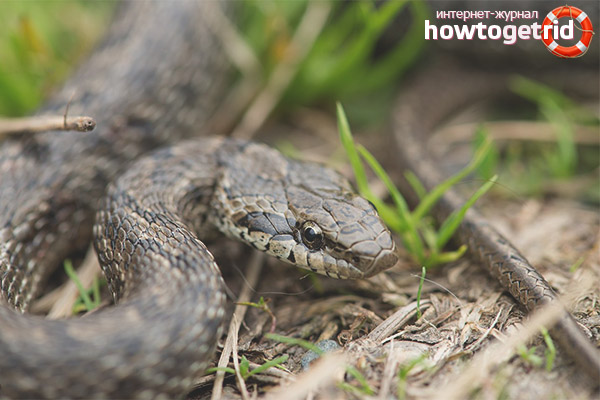
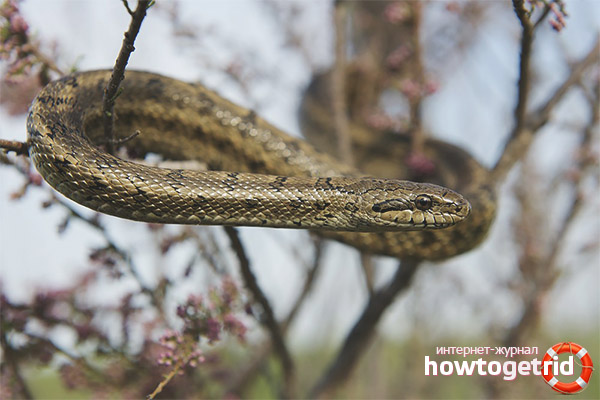
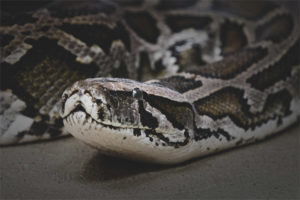
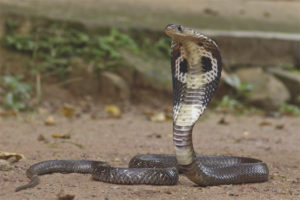

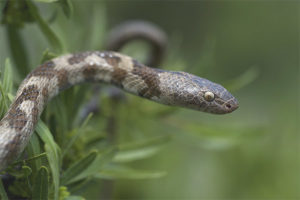
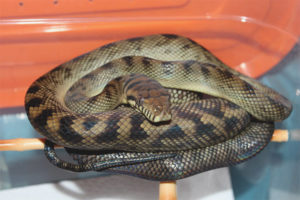
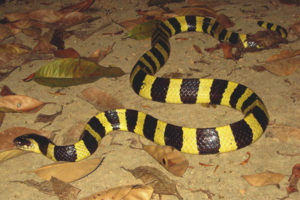
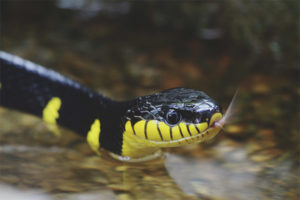
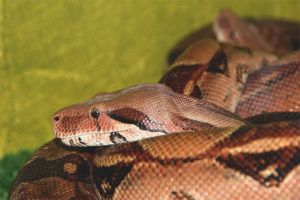
Submit